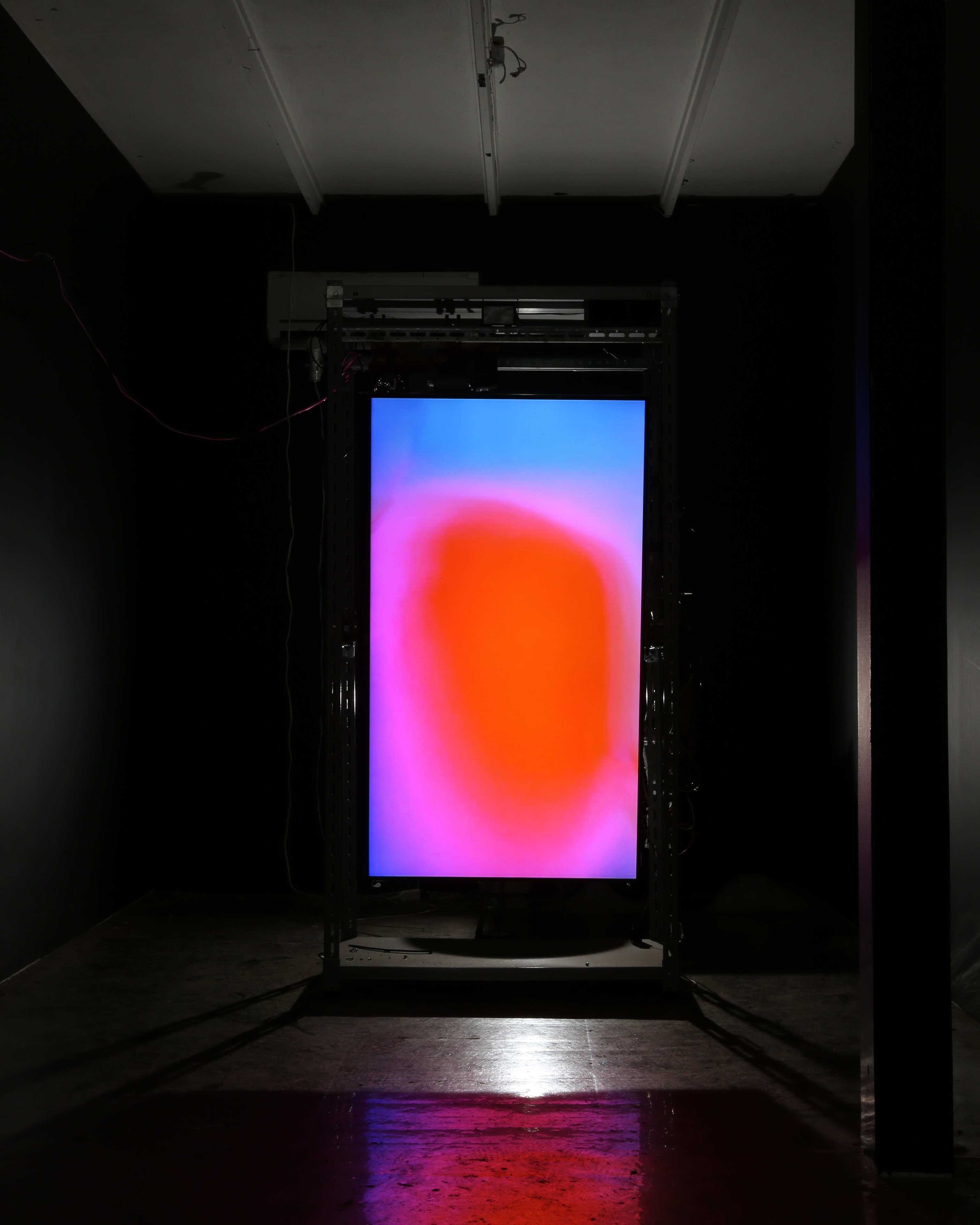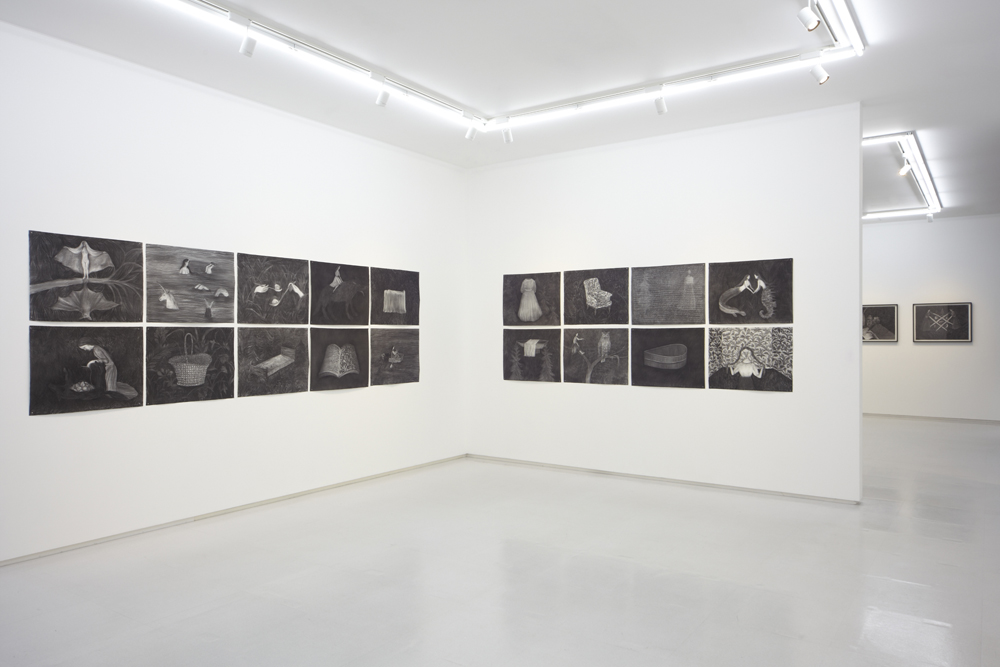|
.......................................................................
Talk Event "Starting never-ending art −for the history of humanity and the other time−"
Tomohito Wakui (artist)/ Sekai Kouzuma (curator)/ Toshiki Hirano (architect)/
Kosuke Ikeda (artist)/ Nozomu Matsumoto (artist)/ Kosuke Ikeda (artist)/
Toshikatsu Kiuchi (architect)/ Yuki Takeda (engineer)
8/ COURT (in front of 8/ ART GALLERY/ Tomio Koyama Gallery on the 8th floor of Shibuya Hikarie)
Wednesday, 31 August, 6pm - 9pm (doors open: 5:30pm)
Admission: Free
Booking: NOT required
*This talk event will be proceeded only in Japanese.
.......................................................................
In this exhibition we present the film work of Tomohito Wakui, in collaboration with Chim↑Pom. Wakui’s work has the sensation of something seen in the past, yet also the dazzling brilliance of something which might take place in the future that I have experienced in a place like a cavern in Koenji. The images unfurling on the screen inspire us to think without any limitations. We invite you to enjoy the sincere visual expressions of this young artist, constantly surmounting new challenges. (Tomio Koyama)
Humanity has woven its history upon the basis of many negations. The processes of natural selection and extinction among living things; or technology that has been lost, or has become redundant for its era. History has always been created according to provisional and accidental negations. However, art is a technology through which a new world is brought into being, and an artist is someone capable of enlightening us of this. If we were to go no further than the above representation of history, true contentment would forever be barred from us.
What I am attempting in this exhibition is to negate all of these negations which have gone before, and to set my pen in motion in relation to a world which was possible, or which should be possible. This will entail causing the destruction of humanity as it has existed up until now, and will in turn become the first step in order to conceive of a new humanity.
I imagine this. Even though it is absolutely unimaginable. (Tomohito Wakui)
In May this year, Tomohito Wakui held the solo exhibition ‘Long,Long,Long’ at Chim↑Pom’s Gallery Garter (also known as the Kitakore Building). In a pitch-dark space there were optical fibres and monitors, flickering LED lights, and a stinkingly putrid smell of leaf mulch. The interviews and noise sounds of Sun Ra flew through the air intermingled with the hanamogera language of talking monkeys. In the midst of this, a line of light extended up from each artwork and continued to the top of the ceiling. It was like a reconstructed pre-war barracks, antennae jutting out from its roofs just like the buildings of Kowloon Walled City: as though the data collected from the venue was going to be transmitted towards the North Star. Although many young people gathered for the related talk “Visual Expression After Humanity’s Demise”, amidst the enigmatic discussion many voices that could be heard saying, ‘I don’t understand.’ Yet it was not impossible to understand. Wakui is unique in the visual originality and the digital skill of his work. He offers a universal and magical critique of the nature of recent post-internet digital art, which has tended almost always to exult in new technologies, social media, and current affairs-related ideas. Wakui alone questions the hard core of ‘What really is ‘data’?’, accelerating his thoughts toward the notion of data which at this very moment encircles the planet as electromagnetic waves, as it travels with no temporal or spatial limitations. This seems no different at all to what it must have been like in the tranquilly drifting darkness of the cinema in which '2001: A Space Odyssey' was first released in 1968. This August we witness an enhanced version of Tomohito Wakui, thanks to Tomio Koyama’s surprise proposal to hold his solo exhibition at Hikarie. Thinking back to the Kitakore show in Koenji, this great advancement is the equivalent of going from the rivers of the gutter to a hotel swimming pool. The encounter at ‘Long,Long,Long’ between the still unknown Wakui and Tomio Koyama, visiting Kōenji for the first time, will surely lead us closer to a new relationship between the Japanese gallery scene and the critical minds of young people for whom in recent years this scene has had a strongly alienating impression. Wakui further plans to hold a collaborative curation exhibition this autumn with Sekai Kouzuma. In what is surely the beginning of a paradigm shift from the world of objects to that of data, Wakui’s activities in 2016 are certain to be an impetus for our own futures. (Ryūta Ushiro, Chim↑Pom)
Tomohito Wakui was born in 1990 in Niigata. He currently continues to live and work based in Tokyo. His practice includes film pieces as well as work made by combining common junk parts with audio and other components and programming them, in order to produce art that expresses technology’s primitive possibilities. He re-perceives the notion of data in its most fundamental sense, and in doing so, searches – through art - for the next evolution within humanity’s history.
Significant recent exhibitions include ‘Aoi Yasashisa Ni Dakarete’ (Naonakamura, Tokyo, 2012) and ‘Long,Long,Long’ (Garter, Tokyo, 2016). Selected group exhibitions include ‘Genkai Toka Ne-Shi Limiter cut Shiteru Shi Ten’ (Higure 17-15 cas, Tokyo, 2013), ‘Tensai High School!!!!’ (Yamamoto Gendai, Tokyo, 2013), ‘Tabikoen (Dorifuto)’ (Tokyo Metropolitan Art Museum, 2015) and ‘Genbutsu Over Dose’ (Kitakore Building, Tokyo, 2015).
http://www.hikarie8.com/artgallery/2016/08/TomohitoWakui.shtml
Information Provided by: Tomio Koyama Gallery
Period: August 10,2016 (Wed) 〜 August 31,2016 (Wed)
Hours: 11am - 8pm
Closed: Open everyday during the exhibition
Venue: 8/ ART GALLERY/ Tomio Koyama Gallery
|



